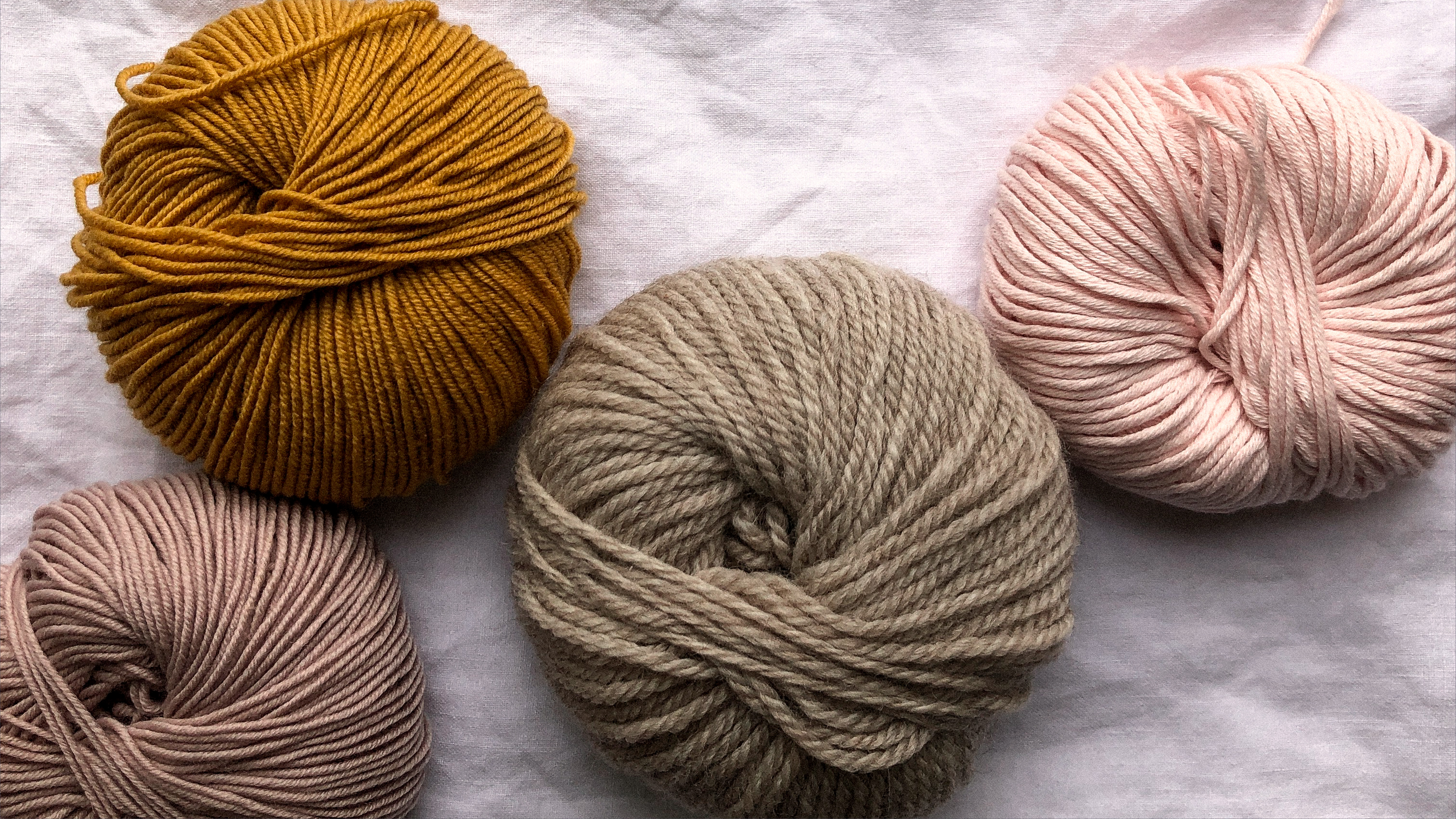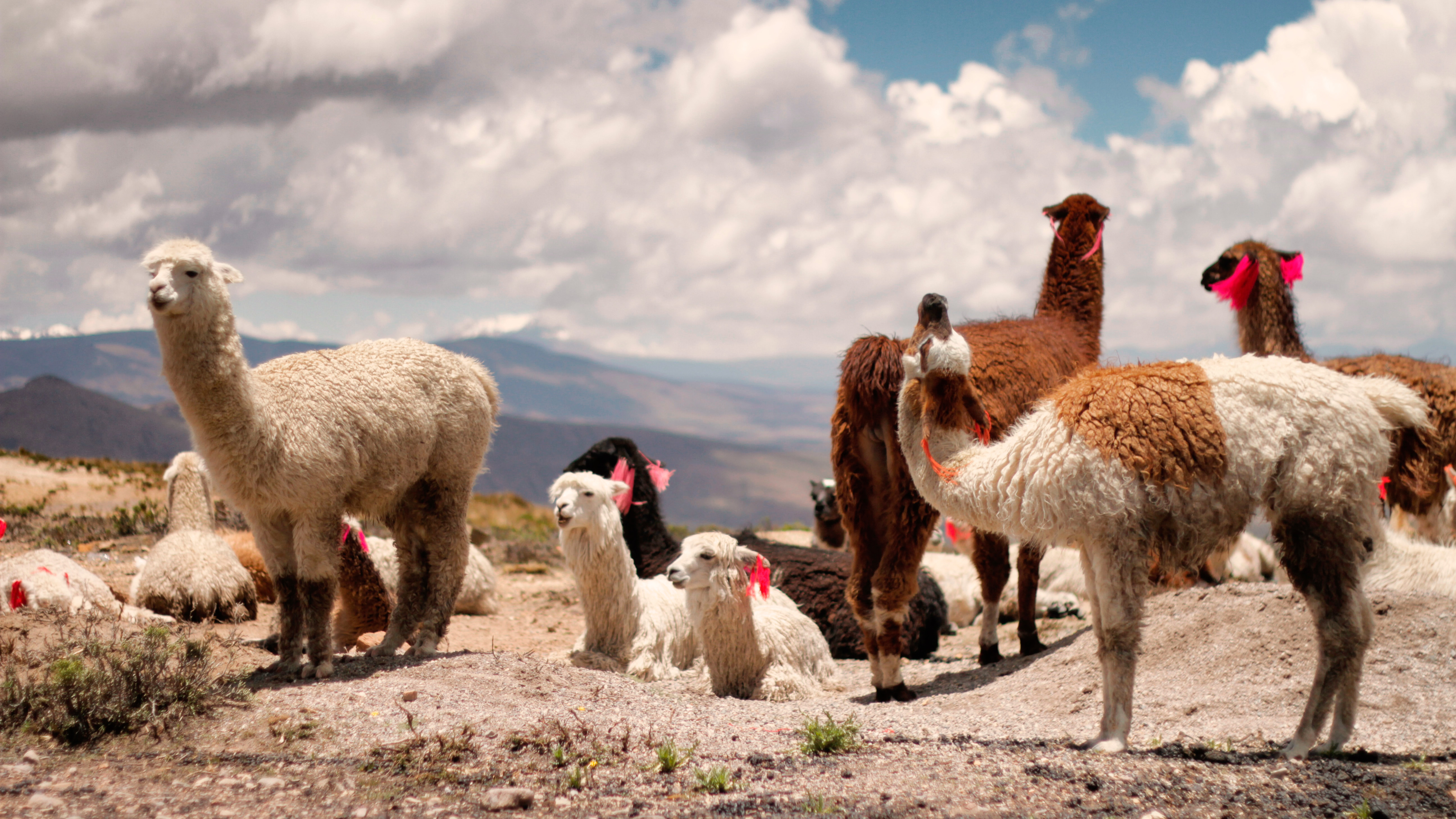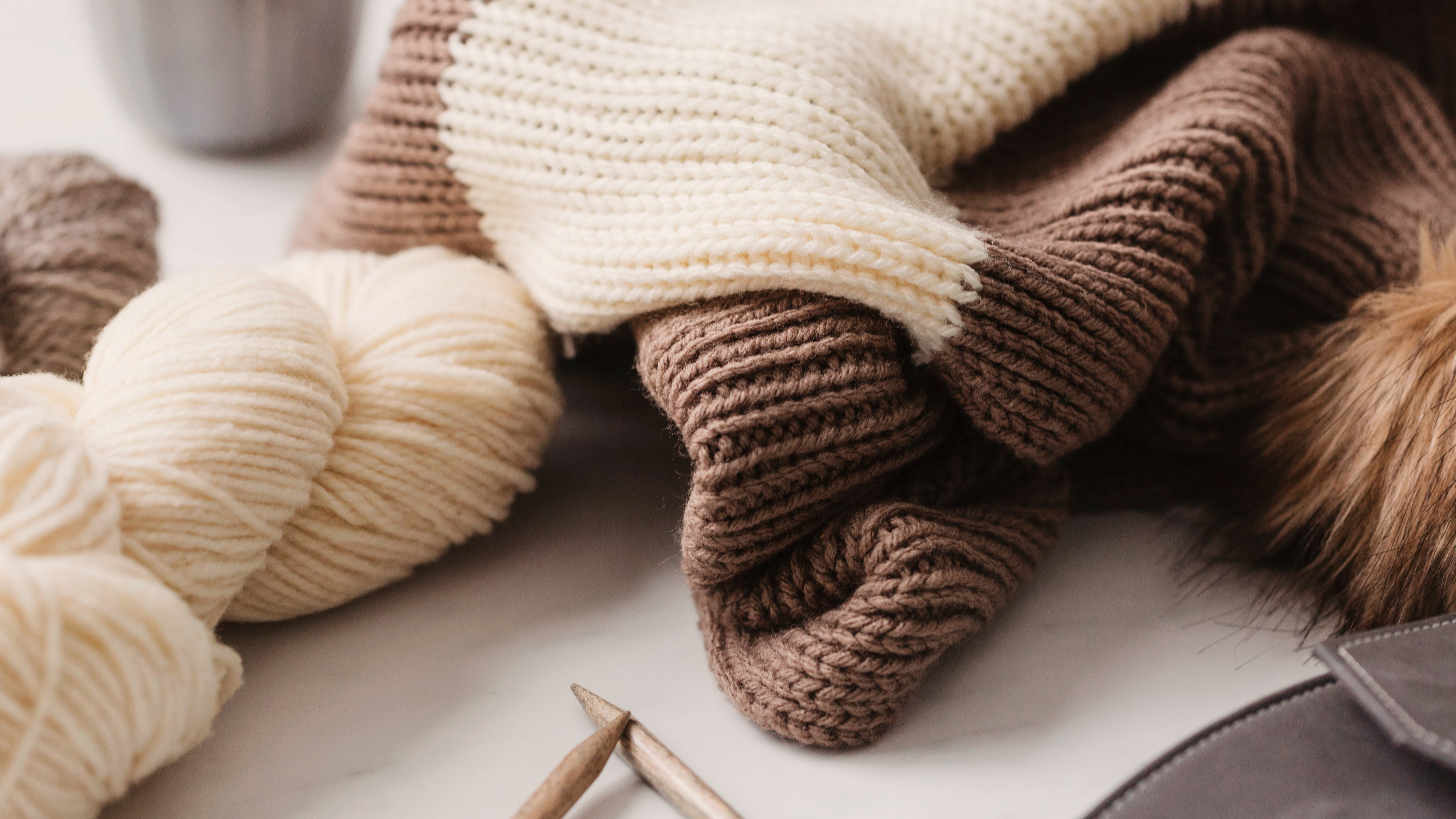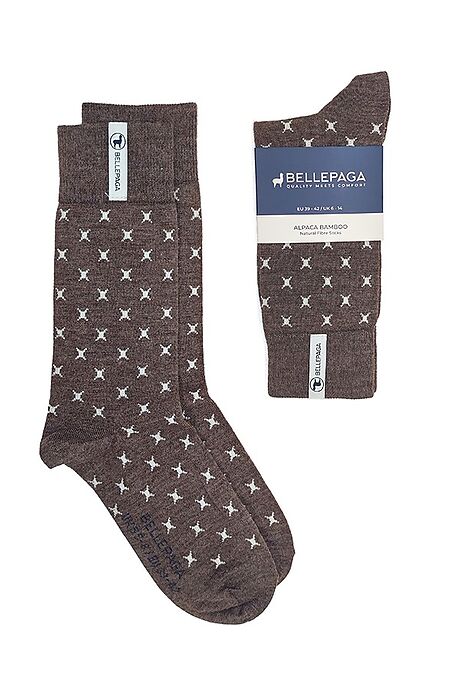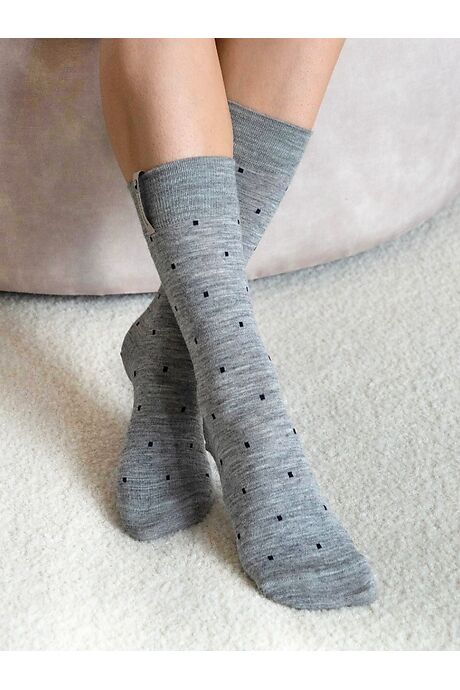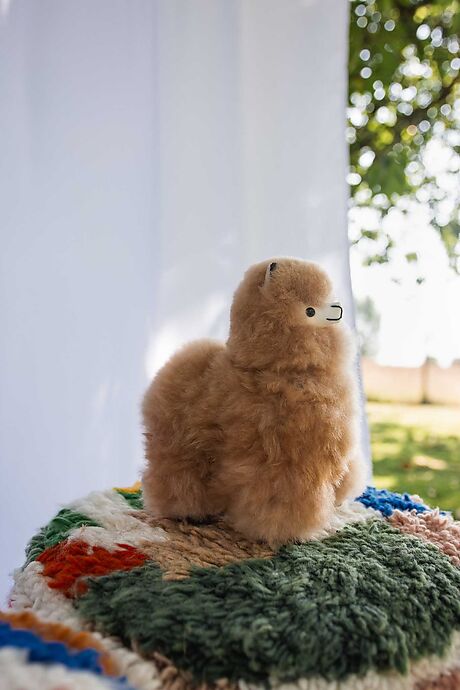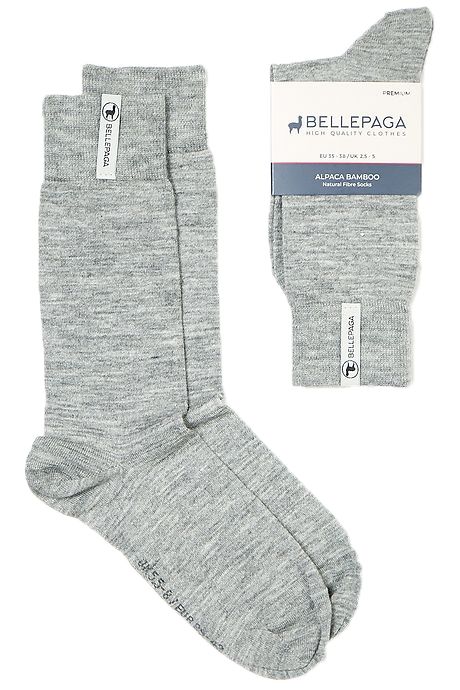Alpaga vs Cashmere
First of all, the term "wool" is commonly used to refer to the fibres produced by the different breeds of sheep. It is also used to talk about fibres produced by other animal species, but a qualifier is then added to distinguish them:
- alpaca wool, alpaca fleece
- mohair wool, fleece of the angora goat
- cashmere wool, cashmere goat fleece
- angora wool, angora rabbit fleece.
In the table below, you will find an approximate classification of the world's finest fibres.
They are measured in microns; 1 micron = 1/1000 millimeters.
Cash and cash equivalents
Average fibre diameter, in microns:
Vigogne 10 to 12 microns;
Merino 12 to 22 microns;
Cashmere goat cheese 15 to 19 microns;
Alpaca 16 to 30 microns;
Guanaco 18 to 24 microns;
Camel 18 to 26 microns;
Angora goat 20 to 30 microns (the angora goat produces mohair fibre)
Lama 20 to 40 microns;
Alpaca or Cashmere
Let's start with a little history. Alpaca and "Kashmir goat" are both domesticated but do not come from the same place. As for Alpaca, it is a small camelid that lives mainly in the Andes mountain range of South America. The "Kashmir goat" or at least 90% of its world production comes from Inner Mongolia, an autonomous region located in China, and Mongolia (the country).
It should be noted that Alpaca is eco-responsible. Indeed, it is more "green" than cashmere. Unlike goats, Alpacas do not tear off the root of the grass when they graze, allowing it to grow back. Unlike goats and sheep, Alpacas do not have sharp hooves, which tear the soil off. It "cuts" the grass without tearing it off, so it can grow back more easily.
It is also important to know that Alpaca waste can be used as fertilizer without chemical treatment. Alpacas are not very greedy, which means they can survive for days without water or food, and a little food is enough to make them happy, unlike goats, which require a lot of resources.
The main environmental concern with goats, for example, is the desertification of the land. Indeed, there are more and more goats in view of Kashmir's request but these animals have the particularity of grazing the grass by pulling out the roots, which prevents the land from regenerating itself. In addition, farmers have seen their wages fall sharply because of the increase in wool volumes, and are thus impoverished. And it's very difficult for them to get out of it!
The colours of Alpaca range from black to white, brown, and beige. No need to dye the fibres if you are satisfied with these colours! It is therefore not necessary to dye the fibres unless you want less natural colours! BellePaga is committed to not using chemical dyes, but only mineral dyes for special colours. And then it produces much more wool than goats. With a comparable or even superior quality, especially when it comes to baby Alpaca, renowned for its finesse and softness. Its fibres are less likely to pilling and last longer.
Secondly, cashmere is more expensive because it takes many more goats to obtain so much raw material. A cashmere goat produces more or less 150 grams of fibre per year while an Alpaca produces 2.5 kg.
The Different Types of Wool
If we compare the diameter, Alpaca fibre is slightly higher than cashmere goat fibre. However, its length represents a significant difference. It makes it possible to make clothes that are more resistant and durable than those made with cashmere goat fibre.
Due to its delicacy, clothing made with Kashmir goatskin fibre wears out quickly. It is therefore more prone to pilling due to its structure and tends to stretch easily and is not necessarily resistant, at least not as resistant as Alpaca fibre.
Both fibres (Alpaca+cashmere) are water-resistant compared to other natural fibres.
Alpaca fibre has a natural sheen that surpasses the dull appearance of cashmere fibre. Its qualities allow a greater variety of clothing. Since the price of cashmere fibre is higher, the clothes made from this fibre are always thinner.
Alpaca fibre is easier to maintain and remains clean for longer. Cashmere fibre retains odours and therefore requires frequent dry cleaning. Moths love the fibre of Kashmir goats. An unclean sweater quickly attracts them.
Because it does not retain moisture, the thermal insulation characteristics of alpaca fibre are unbeatable. Obviously, a dry garment increases comfort for the wearer. With a moisture absorption rate of 15%, cashmere goat fibre cannot compete with this result.
Alpaca wool at BellePaga
BellePaga, a ready-to-wear brand, has specialised in Alpaca wool. This material is the one that most corresponds to the values of respect, transparency, quality and ecology that this Belgian start-up conveys.
Indeed, the co-founder of BellePaga, Arnaud de Patoul, grew up in Bolivia. For the creation of the brand, he visited South America in order to find qualified breeders and craftsmen, acting in the respect of the animal and the people. Every year, BellePaga visits its employees to ensure that they have good working conditions. The fair remuneration of each of them is also advocated.
The alpacas live in total freedom in the Andes, their natural habitat. The wool is sheared once a year, in spring, only from adult alpacas.
BellePaga products are mainly made of Baby Alpaca, one of the finest, softest and highest quality alpaca wool fibres. Its thermoregulatory, hypoallergenic, softness and warmth benefits are combined with an ecological interest that goes against the fast-fashion phenomenon. Indeed, thanks to the low ecological footprint of the animal, the resistance of the fibre allowing Alpaca wool garments to have a long life, the maximum reduction of polluting transports and the ecological BellePaga packaging, we try to reduce considerably our environmental impact while pleasing you with qualitative products.
Our BellePaga products are easy to maintain, all you need to respect your Alpaca wool is a mild shampoo for delicate wools. We recommend dry-cleaning or hand-washing at a low temperature (between 10 and 20 degrees) and air-drying flat. Drying in a dryer is strongly discouraged and ironing should ideally be done with a cloth between the linen and the iron. To find out more, go to How to maintain Alpaca wool ?
This is why Alpaca fibre is internationally recognized as one of the finest and most luxurious fibres in the world! Discover our wide range of Alpaca products without delay and indulge yourself, to live an authentic experience guaranteed!
-
Mallqui Socks - Classic
- 35 - 38
- 39 - 42
- 43 - 46
-
Muju Socks - Classic
- 35 - 38
- 39 - 42
- 43 - 46
-
Apocuna Scarf
-
Alpaca Soft Toy 23 cm - Guillermo
-
Sami Premium Socks - Classic
- 35 - 38
- 39 - 42
- 43 - 46

